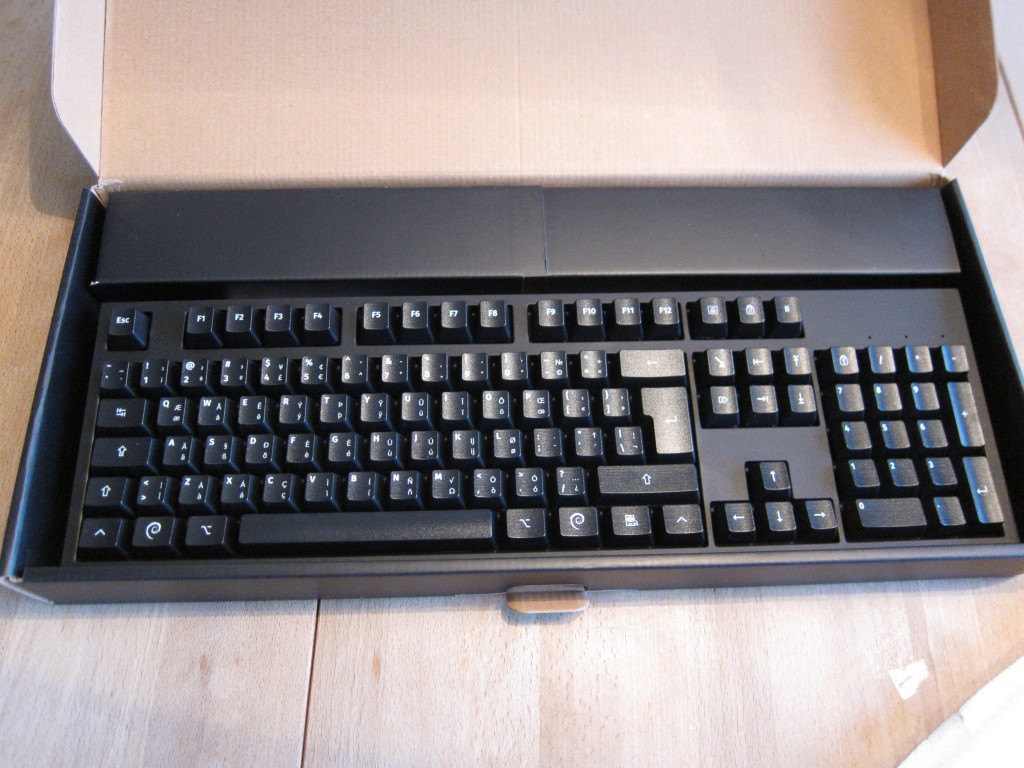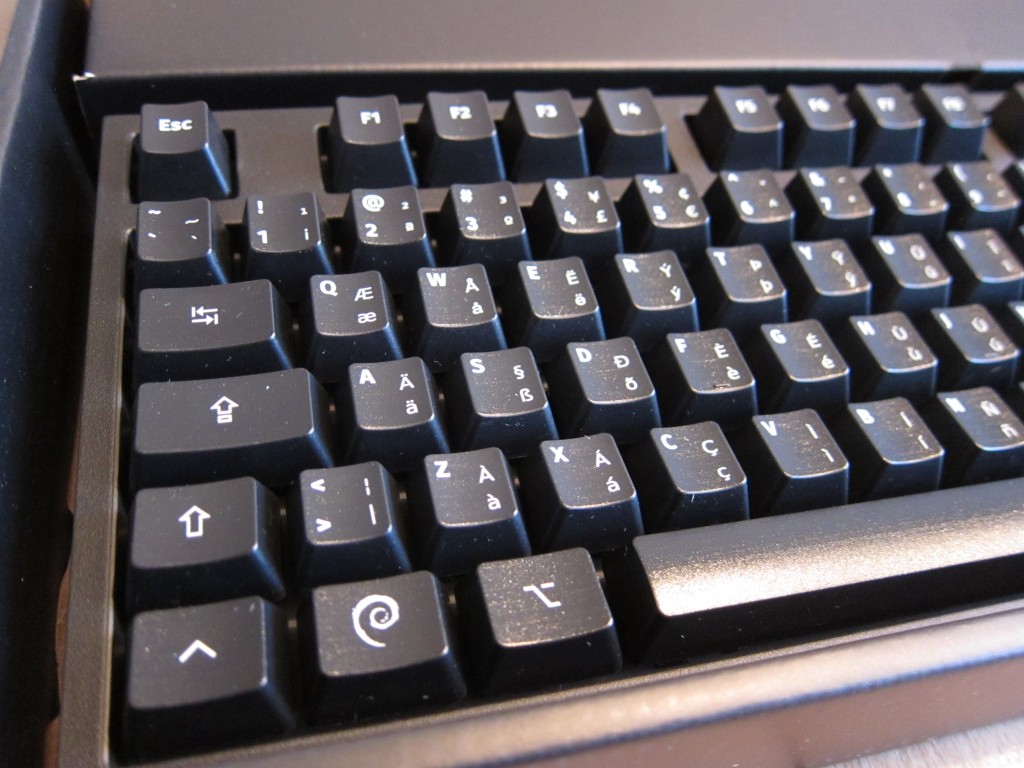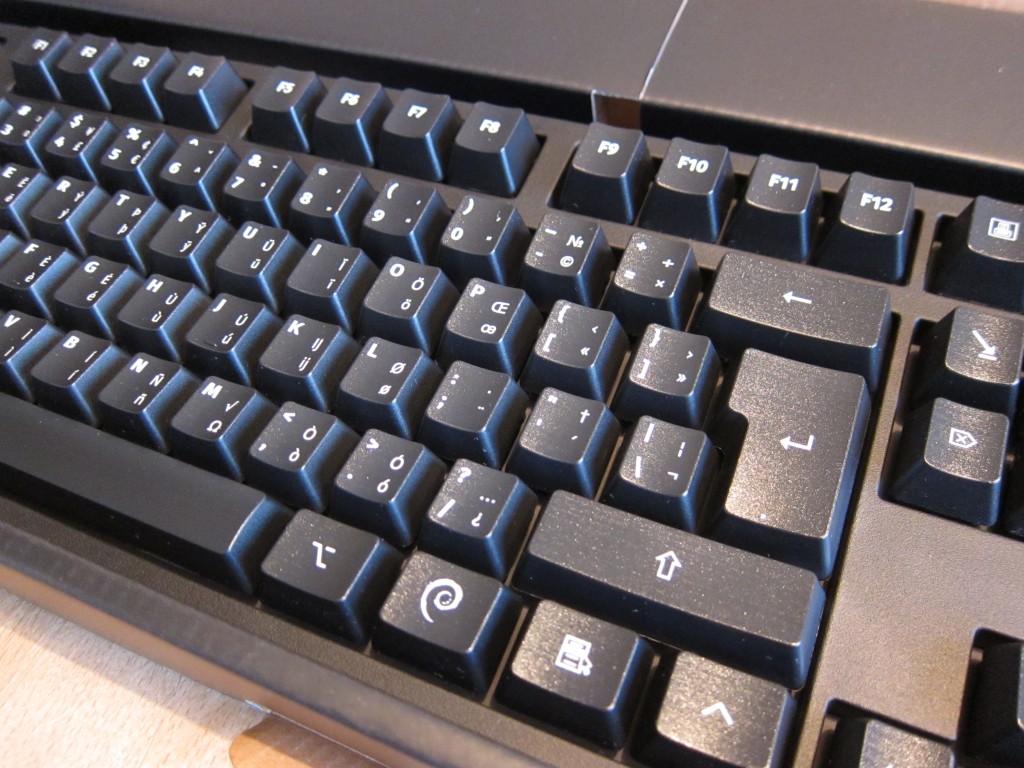Presenting the EurKEYboard: A mechanical keyboard for Europeans and coders
For several months, I’ve been using Steffen Brüntjen’s EurKEY keyboard layout. That layout combines a general US feel with special characters for many western European languages.
That’s fantastic for programmers. You get easy access to keyboard shortcuts that would otherwise be impossible or in weird locations – try typing Alt-` on a Swiss-German keyboard for example, you’ll find it’s impossible.
When it comes to braces, most keyboard layouts in Europe are a nightmare. Some require shifting, some require alt-shift to get to the braces and quotes you need several hundred times a day as a programmer. EurKEY instead makes all manner of braces available with one keystroke, just like on a US keyboard. This makes it much more relaxing to type, whether on the shell, in an editor or in some heavyweight IDE.
Translators are happy as well. Once they’ve memorized the positions of the special characters they can do three-way translation between e.g. Icelandic, Spanish and German without ever switching the layout or memorizing new finger chords.
The only downside? I always wanted to peek at something to see where the special characters are, and looking at a printout of the layout became tedious. So why not create a EurKEYboard in hardware, with all the glyphs printed right on it, and upgrade my plastic piece of crap to a lovely mechanical keyboard in the same step?
This is how I came to be the proud owner of the world’s first EurKEYboard. Behold:
That be still fresh in its packaging, yo.
You can have a closer look at the workmanship and some of the glyphs:
And here’s the other side, with the important braces:
Sorry about the shitty photography.
Now, I’m sure that if you’re European, a translator, a programmer or all of the above, you want to have one of these. In our usual, greedy world I’d be saying, “hand me US$200 and you can have one.” But because I believe in sharing, I’m instead saying “hand US$150 to wasdkeyboards.com and you can have one. Or ten.”
I’m releasing my keyboard layout for printing on their keyboards, it’s on GitHub. Just make sure to open the layout in Inkscape, enable any layers you want (you can put a Windows icon where my Debian swirl is, for example), then convert each layer to a path and boom, there you go, printable layout.
After that, proceed to wasdkeyboards.com, choose a custom Mechanical Keyboard V2, color all the keys the way you want them and attach the SVG of your custom layout. A few days later, the mailman will ring with a EurKEYboard for you. I’ve included two alpha layers as well, one with Mozilla’s Fira Sans font for the main keys, the other with Adobe’s Source Pro Sans.


